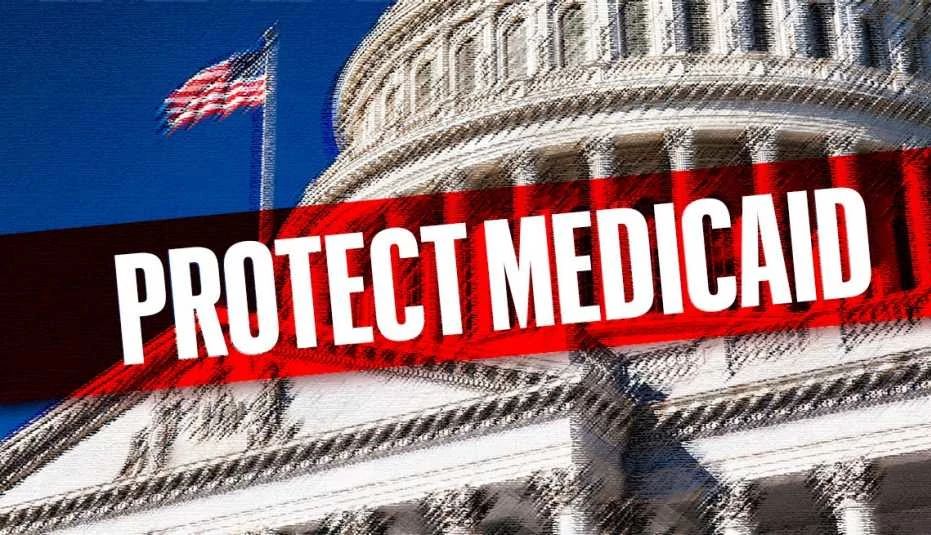AARP Hearing Center
Background
Medicaid eligibility has generally been open to certain categories of individuals and those with specific financial circumstances. Long-standing populations covered by Medicaid include mothers and children, and people who are age 65 and older, blind, or disabled. Most states have opted to cover all adults with incomes below 138 percent of the Federal Poverty Level under a new category created by the Affordable Care Act. This is known as Medicaid expansion. Many states have also opted to cover additional populations. However, they must follow federal standards with respect to income and assets.
Older adults and people with disabilities: For the most part, federal law requires states to provide Medicaid coverage to older adults with low incomes who receive cash assistance through Supplemental Security Income (SSI). An exception to this rule gives states the option—known as the Section 209(b) option—to use their more stringent state general assistance criteria instead of federal SSI rules to determine Medicaid eligibility. This option comes from section 1902(f) of the Social Security Act, which allows states to have more restrictive eligibility criteria than SSI.
States may also cover additional populations, as approved by the federal government, such as individuals who are eligible for institutional care or home and community-based services.
Income and assets-based eligibility: Individuals eligible under this pathway, which is based on income and assets, are sometimes known as the MAGI (i.e., “modified adjusted gross income”) population. MAGI is the methodology for determining income for Medicaid eligibility. It uses an individual’s or a couple’s gross income, with some adjustments (e.g., for foreign income and tax-exempt interest). The MAGI standard eliminates asset tests. States may still use other income and asset standards in determining eligibility for non-income-based eligibility categories, like disability and age.
States can expand Medicaid eligibility to cover adults without dependent children with incomes at or below 138 percent of the federal poverty level. States choosing this option receive enhanced federal matching funds. Medicaid programs must also cover parents and caretakers of children, though income thresholds to qualify vary widely from state to state.
States may also offer eligibility to individuals with high medical expenses but whose incomes are too high to qualify for Medicaid. If a state chooses, such individuals may subtract certain medical expenses from their income until they reach the eligibility threshold. This eligibility pathway is sometimes referred to as “spend down.” States that use the Section 209b option for eligibility are required to allow people to spend down until they reach income and asset levels that meet Medicaid eligibility thresholds.
Impact of state-funded supplemental payments (SSPs) on Medicaid eligibility: Federal law allows states to provide SSPs to individuals to supplement their SSI income. These payments can be made to all individuals receiving SSI or targeted to certain groups, like those receiving care in group homes or assisted living facilities. States may also make SSPs available to individuals whose income exceeds SSI standards. In addition, states are allowed to extend full Medicaid coverage to individuals who receive SSPs. In cases where a person receives SSI and SSP, if a cost-of-living increase in their SSI payment causes them to be over income for an SSP, they remain eligible for Medicaid under the Pickle Amendment. Now part of the law, this requires states that extend Medicaid eligibility to people on SSI, people receiving SSPs, or both to disregard cost-of-living increases to SSI payments when determining Medicaid eligibility (see also Financial Protections and Choice for Medicaid Beneficiaries and Their Families for an explanation of these pathways).
Immigrants with documented status: Generally, immigrants with documentation who have lived in the U.S. for less than five years may only access Medicaid if they need emergency services or if their state pays 100 percent of their costs. Immigrants who have not yet met this requirement have the option to buy coverage and receive subsidies through the health insurance exchanges. However, states are increasingly expanding Medicaid coverage options to immigrants regardless of legal status. Eleven states currently provide some coverage, most often for children. California expanded Medicaid to provide full benefits to all undocumented immigrants starting in 2024.
Selected U.S. territories: Territories must operate Medicaid within broad federal guidelines and under federally approved plans. But American Samoa and the Northern Mariana Islands have federal waivers that exempt them from federal eligibility rules. The remaining territories have some leeway in how they cover their Medicaid populations. Federal Medical Assistance Percentage for the territories is set by statute at 83 percent, except for Puerto Rico, which is set at 76 percent through September 2027.
Estate Recovery: Federal law allows states to implement estate recovery for receipt of primary and acute-care services. (It is required for long-term services and supports.) People who enroll in the Medicaid expansion could be subject to estate recovery rules (see also Long-Term Services and Supports for more information)
Benefits: The federal government requires states to cover some services, such as inpatient and outpatient hospital care. States can add to their benefit packages (e.g., they may opt to include prescription drug or dental services). All states currently offer prescription drug benefits. Each state chooses which prescription drugs are covered. Most states offer some dental coverage. But which dental services are covered varies.
Mental health benefits: The mental health parity law that requires mental health benefits to be no more restrictive than other health services also applies to Medicaid. However, states have not systematically published information on how well they meet parity requirements. The Centers for Medicare & Medicaid Services (CMS) created a toolkit to help states achieve and maintain compliance with the parity law.
Benefits for people with Medicare and Medicaid coverage: For beneficiaries who are dually eligible for Medicare and Medicaid, Medicaid can cover services beyond what Medicare covers. This includes behavioral health and home and community-based services, dental, vision, and nursing facility care (see also Long-Term Services and Supports Reform). Medicaid may also cover Medicare cost-sharing, for example, coinsurance, copays, and deductibles (see also Medicaid Assistance for Medicare Beneficiaries with Low Incomes).
Medicaid must cover certain clinical preventive services and recommended vaccines. States have the option to make these services available to enrollees without cost-sharing. States that do so qualify for a one-percentage-point increase in their Federal Medical Assistance Percentage (FMAP), described below.
Financing: Under the current Medicaid financing system, federal Medicaid funding grows in response to increased enrollment, service costs, and service use. The FMAP formula determines the federal share of Medicaid financing. Set by federal statute, the FMAP is derived by comparing a state’s per capita personal income to the U.S. per capita personal income. The formula is designed so that no state receives an FMAP of less than 50 percent. Some policymakers have sought to change the current financing by limiting federal contributions. They suggest providing states an annual fixed amount of federal funding (a block grant) or a set amount of federal funding per beneficiary group (a per capita cap).
However, any capped-funding approach to Medicaid risks that financing will not meet beneficiaries’ needs. Capped funding means the state’s Medicaid program likely would not have adequate funding to cover enrollment increases. This may necessitate limiting enrollment or cutting important optional benefits, like long-term services and supports or transportation services. These types of limits would threaten Medicaid’s role as a critical part of the social safety net, especially during economic downturns and other times of social upheaval (see also Low-Income Assistance for more information about the effects of block-grant funding structures on low-income support programs).
Administration: Medicaid programs are jointly administered by the states and the federal government, with the state governments overseeing most of the day-to-day operations. Many changes to state Medicaid programs require federal government approval. This can be done through a state plan amendment or available waiver options (see Medicaid State Plan Amendments and Waiver Authority).
Quality: States contracting with managed care organizations (MCOs) for their Medicaid program must meet certain requirements to ensure care quality. Specifically, they must develop and maintain a state quality strategy that meets CMS definitions, conduct an annual external quality review, and have a quality assessment and performance improvement program. Beginning in 2028, states will also need to have a quality rating system for managed care plans (Medicaid and CHIP Quality Rating System or MAC QRS). This information will need to be available to the public.
To assess Medicaid program performance, states also use validated quality measures such as the Healthcare Effectiveness Data and Information Set and the Consumer Assessment of Healthcare Providers and Systems survey.
MEDICAID ELIGIBILITY, BENEFITS, FINANCING, AND ADMINISTRATION: Policy
MEDICAID ELIGIBILITY, BENEFITS, FINANCING, AND ADMINISTRATION: Policy
Medicaid’s entitlement nature
Federal and state governments should maintain the entitlement nature of Medicaid so all who qualify will be covered. Medicaid should not be financed in any way that threatens this, such as:
- through block grants or caps (global or per capita);
- hard limitations on the availability of federal funding regardless of changes in enrollment, service costs, or service utilization; or
- financial incentives for states to limit or eliminate access to optional services, such as long-term services and supports (LTSS).
Any efforts to restructure Medicaid should maintain and improve current federal and state consumer protections and adopt financing policies and payment strategies that enhance and improve access and quality.
Federal Medicaid funding formulas
Congress should evaluate the federal Medicaid funding formula to determine whether it distributes federal funds equitably among states, consistent with Title XIX of the Medicaid statute.
Congress should enact legislation making the Federal Medical Assistance Percentage formula responsive to state economic cycles on a permanent basis.
Medicaid benefits
State and federal governments should ensure that benefits and services address individual needs. This should include a wide array of services, such as medical, mental health, prescription drugs, LTSS, and language, cultural, and social services. The benefits and services must also be accessible to people with disabilities.
States should elect to provide recommended screening services, immunizations, and certain medical or remedial services to Medicaid beneficiaries without requiring cost-sharing, to promote maximum use of preventive services.
States should also cover optional services, including dental services for adults.
States must ensure that plans and providers offer person- and family-centered care. Such care should honor individuals’ preferences and values, support the desire to self-direct LTSS, and recognize the willingness and capacity of family caregivers to provide care. Person- and family-centered care practices should be evidentiary-based.
States must also ensure that services are culturally competent and linguistically appropriate.
State policymakers should make information on compliance and monitoring of parity requirements (in both fee-for-service and managed care delivery models) publicly available. These updates should provide findings and information on efforts to close any identified gaps.
Access to providers
States should ensure that beneficiaries have reasonable and adequate access to providers (including transportation providers).
States should enhance access to care and protect consumer choice by giving beneficiaries greater access to nurse practitioners and other Advanced Practice Registered Nurses (APRNs). This includes removing laws that require APRNs to enter into business contracts with physicians, as these business agreements have no impact on quality of care and unnecessarily restrain trade.
While preserving access, states should contract with cost-efficient, high-quality hospitals, physicians, and other providers to serve Medicaid beneficiaries.
Federal and state governments should conduct annual reviews to ensure that Medicaid’s rules for paying providers and managed care organizations do not undermine health care access and quality.
States should consider payment incentive systems that reward high quality and improvements in care.
Medicaid estate recovery
The federal government should permit states to opt out of Medicaid estate recovery.
If estate recovery is utilized, the federal government and states should establish procedures for waiving estate recovery when undue hardship would result. States should forgo estate recovery of Medicaid liens for families with low incomes.
States should use any permitted flexibilities to minimize the impact of estate recovery. This could include limiting the benefits for which the state pursues recovery to only those required by federal law, expanding hardship waiver policies, and establishing cost-effectiveness thresholds.
Addressing disparities
The Centers for Medicare & Medicaid Services should work to eliminate racial, ethnic, and socioeconomic disparities in care.
Grievance and appeal rights
The federal government and states must ensure that all Medicaid beneficiaries have meaningful opportunities to exercise their statutory grievance and appeal rights, including a fair and rapid appeals process.
States must ensure that beneficiaries’ grievance and appeals rights are clearly explained and that beneficiaries have access to easy-to-understand materials that are culturally competent and linguistically appropriate.
States must also ensure that beneficiaries receive access to needed services during appeals.
Providing legal assistance
States should establish legal assistance programs for Medicaid beneficiaries who have difficulty obtaining services or paying their provider bills. These programs should also assist beneficiaries who are inappropriately receiving health care bills from providers or believe a Medicaid claim was incorrectly processed or inappropriately denied.
Cost and medical necessity
The cost of a service or item should not be the principal or determinative criterion in findings of medical necessity for Medicaid coverage. Where cost is a factor, programs should take into consideration whether higher initial costs will result in future savings.
Fraud and abuse
In addressing fraud, waste, and abuse, federal and state governments should identify and implement strategies that do not threaten access to program benefits for people with low incomes and direct savings back into the program.
Disease management programs and Medicare Part D
Congress should require Medicaid and Medicare program administrators to collaborate to ensure that Medicaid disease management programs continue to function effectively for Medicaid beneficiaries receiving Medicare prescription drug coverage. Both Medicare and Medicaid should be required to evaluate disease management programs’ impact on health outcomes. They should also ensure the protection of beneficiaries’ privacy rights.
Federal and state governments should be transparent and inclusive in decisions related to managed care.
Federal and state governments should establish user-friendly processes to ensure diversity in public involvement. This involves developing, implementing, and overseeing new approaches to providing care, including long-term services and supports.
States should make information on plan performance and other key measures available to the public in a user-friendly manner. For example, materials should be culturally and linguistically appropriate.
Data collection and reporting across managed care organizations should ensure accurate comparisons.































































